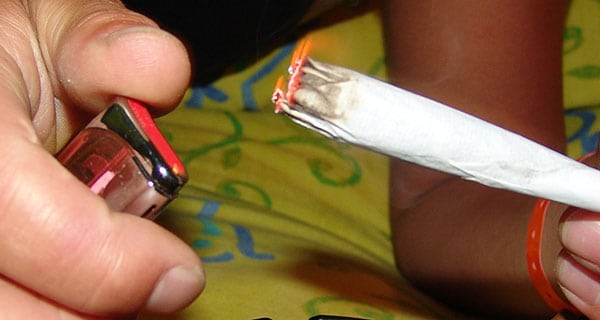 You might wonder how legislators could lose money by legalizing and taxing an addictive substance. Behold, Canadian officials have outdone themselves with the rollout of recreational cannabis.
You might wonder how legislators could lose money by legalizing and taxing an addictive substance. Behold, Canadian officials have outdone themselves with the rollout of recreational cannabis.
Provinces and municipalities, many already in financial dire straits, have revealed a bevy of legalization costs. Meanwhile, tax projections suggest relatively slim pickings, given the size of the cannabis market.
Oct. 17 was an historic day for Canada, even if the practical aspects leave you scratching your head. As only the second nation to enact across-the-board liberalization, it meant a widely-practised activity would no longer be punishable, along with pardons for past minor infractions.
Once you get into the weeds, though, you find a spider’s web of conflicting regulations. Manitoba and Quebec, for example, are resisting the federal law and banning home cultivation, and edible forms of cannabis have another year to wait. Media advertising and event sponsorship also remain illegal for cannabis providers.
Quebec is even prohibiting items that were legal. That includes anything with the “name, logo, distinguishing guise, design, image or slogan that is directly associated with cannabis.”
Further, protectionism reigns and imports and exports remain illegal. In a shout-out to the dairy sector, only homegrown cannabis is good enough for Canadians!
The admission of legal use still places one at risk of being banned from the United States by border officials. Even if border states and provinces have legalized its recreational use, American federal law dictates that the border remains under strict prohibition.
Perhaps this confusion was to be expected, given reluctance from many provinces. The switch overnight from illegality to open sales in provincial stores – including online – smacks of hypocrisy and tax profiteering.
The costs
The natural assumption with the end of prohibition is that enforcement costs will lessen. Not so fast. Anne McLellan of the legalization task force notes that, particularly at the outset, there will likely be increased enforcement.
The tight and numerous regulations associated with the now-legal industry will inevitably criminalize a whole new swath of people who don’t realize their wrongdoing. Further, police will check more closely for cannabis intoxication among drivers.
The new framework will require drug-screening equipment and widespread training of law-enforcement officials, and the Federation of Canadian Municipalities fears higher medical expenses. The federation estimates total costs at $3 million to $4.5 million annually for a population the size of Quebec City, with half a million residents.
In Red Deer on Sept. 27, Alberta Premier Rachel Notley announced “funds up front” to defray the costs for municipalities. However, the $11.2 million made available across the province over two years, based on application and justification from cities, has failed to impress. The mayor of St. Albert said, “The province is downloading the costs of legalization onto local communities while they pocket the cash that was intended to offset the costs.”
Revenue goes wanting
When Justin Trudeau campaigned for legalization in 2015, before he became prime minister, the market price was $8.43 per gram; it now stands at $7.43 per gram. This decline is consistent with cannabis’s already ubiquitous availability throughout Canada. In fact, consumption is so widespread that Statistics Canada estimate $5.7 billion worth was sold in 2017, or about $1,200 per consumer.
Not only is there widespread consumption, corporations entering this space demonstrate impressive profit potential. Bloomberg News puts the market’s capitalization at $79 billion, with Canopy Growth alone at $13.1 billion.
Prior to legalization, more than four-fifths of consumption came from the black market; the rest was from approved medical sources. The success of informal sales casts a shadow over the viability of a legal but taxed and highly regulated alternative. Survey data attests to high price sensitivity and a reluctance to switch suppliers on account of legalization.
Comedians have pounced on the lack of incentive to switch. “Marijuana is a dangerous drug,” says Sonia of the Truther Girls, “unless the government is selling it.” The satirical Beaverton summed it up well: “Our government will replace this straightforward [black-market] process with the reassuring convolution and bloated costs that Canadians are used to when trying to do anything adult or fun.”
Even McLellan, a former federal health minister, says “nobody should be naive and think you can eliminate criminal activity from these areas entirely. That’s not going to happen.” She says that will have to be a factor when considering what the market will bear in terms of tax rates, which start with 10 per cent imposed from the federal level (75 per cent returned to provinces).
The C.D. Howe Institute estimates that the informal sector will continue to easily outweigh legal cannabis trade, and that federal and provincial taxes will collect $300 million to $600 million per year. That is $10 to $20 per Canadian and, no matter how you slice it, a drop in the ocean of federal and provincial budgets.
Fergus Hodgson is the executive editor of Antigua Report, a columnist with the Epoch Times and a research associate with Frontier Centre for Public Policy.
The views, opinions and positions expressed by columnists and contributors are the author’s alone. They do not inherently or expressly reflect the views, opinions and/or positions of our publication.


